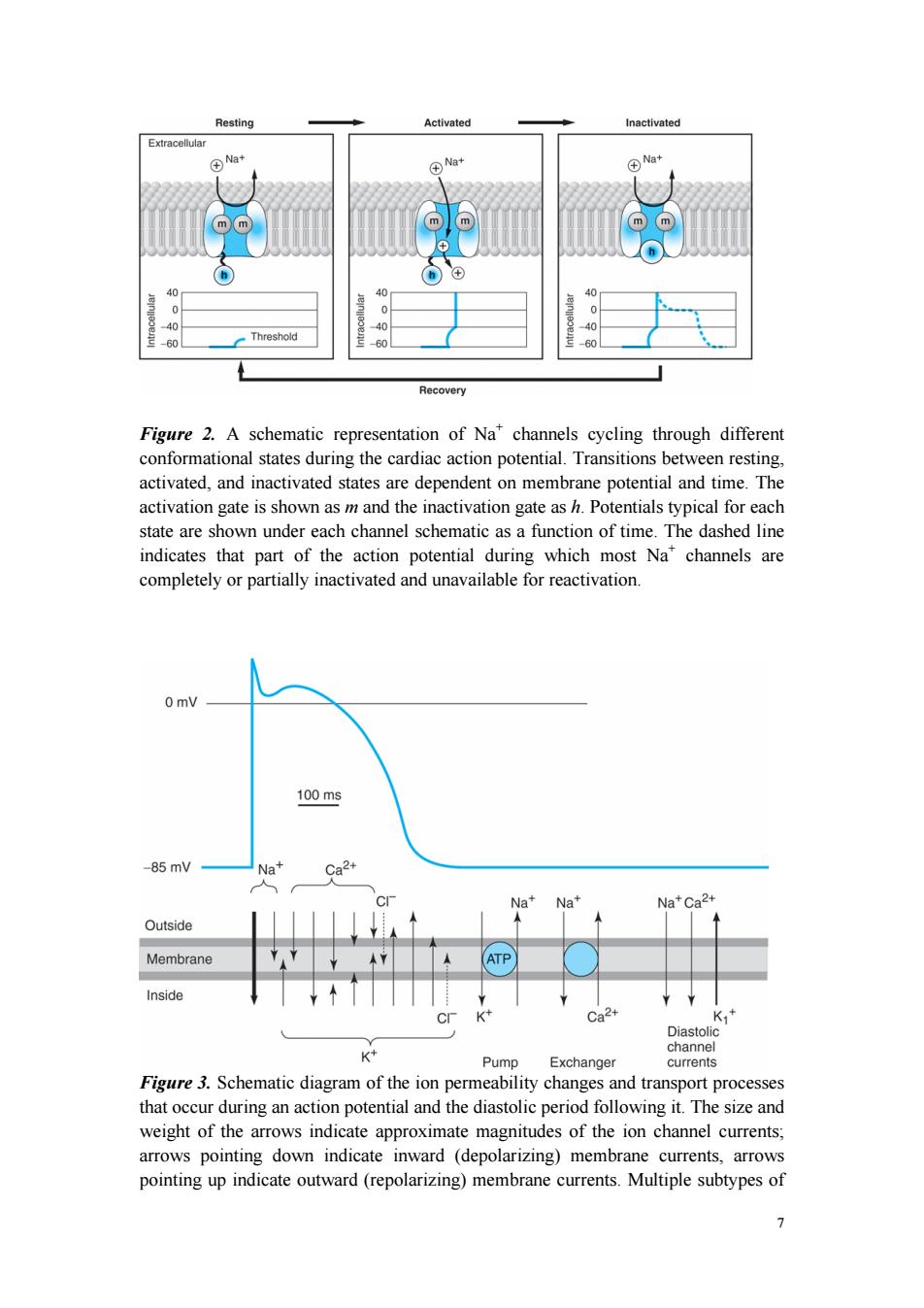正在加载图片...

Resting Activated Inactivated Extracellular Na+ ④N+ m m ⑧ 40 0 0 0 90 0 60 Threshold 60 60 Recovery Figure 2.A schematic representation of Na*channels cycling through different conformational states during the cardiac action potential.Transitions between resting, activated,and inactivated states are dependent on membrane potential and time.The activation gate is shown as m and the inactivation gate as h.Potentials typical for each state are shown under each channel schematic as a function of time.The dashed line indicates that part of the action potential during which most Na"channels are completely or partially inactivated and unavailable for reactivation. 0 mV 100ms -85mV Na+ Ca2+ Na+Na+ Na+Ca2+ Outside Membrane ATP Inside Ca2+ K,+ Diastoli K channel Pump Exchanger currents Figure 3.Schematic diagram of the ion permeability changes and transport processes that occur during an action potential and the diastolic period following it.The size and weight of the arrows indicate approximate magnitudes of the ion channel currents; arrows pointing down indicate inward (depolarizing)membrane currents,arrows pointing up indicate outward(repolarizing)membrane currents.Multiple subtypes of 17 Figure 2. A schematic representation of Na+ channels cycling through different conformational states during the cardiac action potential. Transitions between resting, activated, and inactivated states are dependent on membrane potential and time. The activation gate is shown as m and the inactivation gate as h. Potentials typical for each state are shown under each channel schematic as a function of time. The dashed line indicates that part of the action potential during which most Na+ channels are completely or partially inactivated and unavailable for reactivation. Figure 3. Schematic diagram of the ion permeability changes and transport processes that occur during an action potential and the diastolic period following it. The size and weight of the arrows indicate approximate magnitudes of the ion channel currents; arrows pointing down indicate inward (depolarizing) membrane currents, arrows pointing up indicate outward (repolarizing) membrane currents. Multiple subtypes of